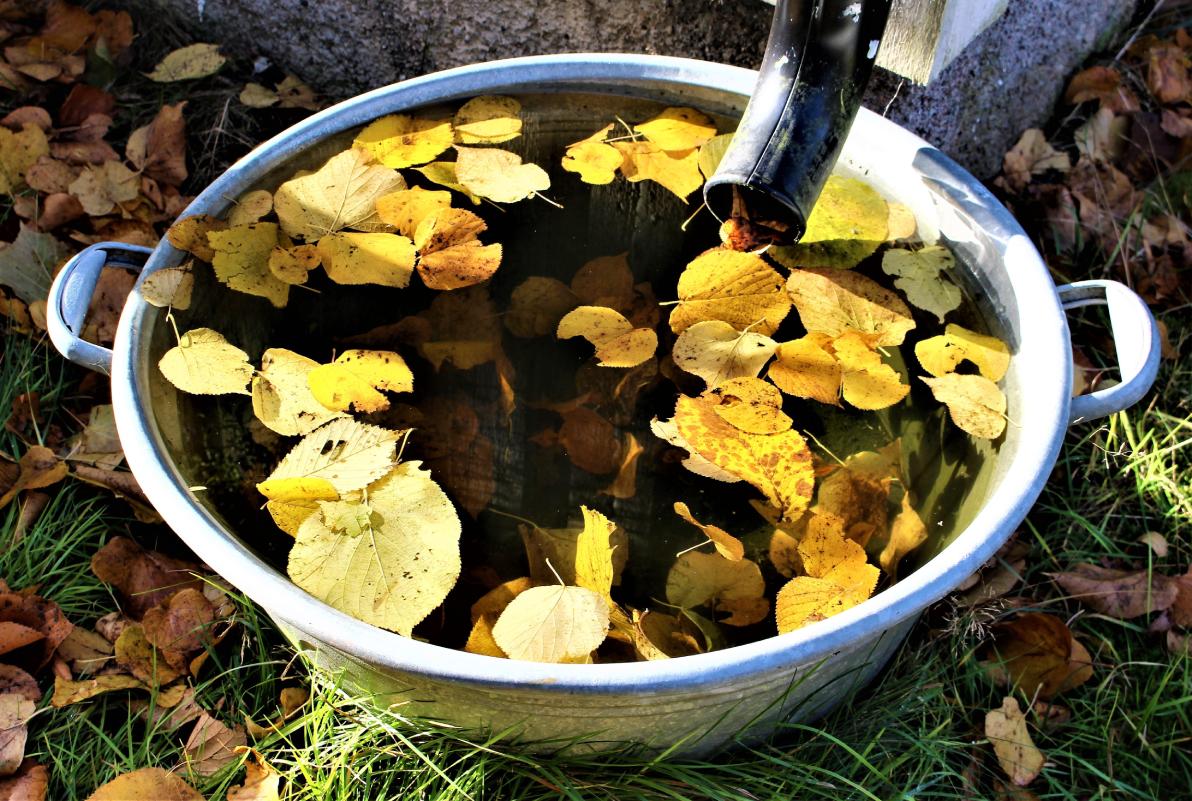Introduction
Water is a precious resource for sustaining life and supporting various human activities. With growing concerns about water scarcity and environmental sustainability, it is crucial to emphasize the importance of water conservation. Rainwater harvesting is a sustainable and efficient method that allows us to collect and utilize rainwater for various purposes. We can explore the significance of water conservation and provide an overview of rainwater harvesting.
Importance of water conservation
Water conservation is essential for preserving natural resources, maintaining ecological balance, and ensuring a sustainable future. By conserving water, we can:
-
Preserve natural ecosystems: Conserving water helps to protect rivers, lakes, and other freshwater bodies, ensuring the preservation of aquatic habitats and the species that depend on them. It also supports the overall health and functioning of ecosystems.
-
Mitigate water scarcity: Many regions worldwide face water scarcity issues, either due to limited freshwater sources or increased demand. Water conservation is vital in mitigating water scarcity by reducing wasteful practices and ensuring water availability for essential needs.
-
Reduce energy consumption: Treating and distributing water requires energy. By conserving water, we can indirectly reduce energy consumption associated with water treatment and transportation, leading to lower carbon emissions and environmental impact.
Overview of rainwater harvesting
Rainwater harvesting is a technique that involves collecting and storing rainwater for future use. It provides an alternative water source that can be used for various non-potable purposes, such as irrigation, toilet flushing, and laundry. Here’s an overview of how rainwater harvesting works:
-
Collection: Rainwater is collected from rooftops, paved surfaces, or catchment areas and directed into storage systems. Common collection methods include roof gutters, downspouts, and surface channels.
-
Filtration: Rainwater is typically filtered to remove debris, leaves, and other contaminants before storage. Filtration systems can range from simple mesh screens to advanced filters, ensuring the quality of the collected water.
-
Storage: The filtered rainwater is stored in tanks, cisterns, or underground reservoirs. These storage systems can be above-ground or below-ground, depending on available space and specific requirements.
-
Distribution: The stored rainwater can be distributed for various purposes through gravity flow or pumps and distribution systems. Rainwater can be used for irrigation, landscape watering, toilet flushing, laundry, and other non-potable applications.
Rainwater harvesting offers several benefits, including water conservation, reduced reliance on municipal water supplies, and cost savings. Homeowners can reduce their freshwater consumption by utilizing rainwater and contributing to a more sustainable water management system.
How Rainwater Harvesting Works
Rainwater harvesting involves a collection process and using different systems to capture and store rainwater. Understanding how rainwater harvesting works is essential for implementing an effective and efficient water conservation strategy.

Explanation of the collection process
The collection process in rainwater harvesting typically involves the following steps:
-
Catchment area: The catchment area refers to the surface on which rainwater falls and is collected. It is usually the rooftop of a building, which acts as the primary catchment area. Surfaces like paved areas or open ground can also serve as catchment areas.
-
Gutters and downspouts: They are installed along the roof’s edges to collect rainwater and direct it towards the storage system. Gutters collect water from the entire rooftop area, while downspouts channel the water downward.
-
Filtration: A filtration system is employed to ensure the quality of collected rainwater. This system removes leaves, debris, and other particles from the water. Filtration methods can include mesh screens, sediment filters, and advanced filtration systems, depending on the level of purification desired.
-
Storage: The filtered rainwater is then stored in tanks or cisterns for later use. Depending on available space and aesthetic preferences, these storage containers can be above-ground or below-ground. Proper sealing and insulation of the storage system help maintain the water quality and prevent contamination.
-
Distribution: The stored rainwater is distributed for various purposes when needed. Gravity flow can be used for low-pressure applications like landscape irrigation, while pumps and distribution systems are employed for higher-pressure uses such as toilet flushing or laundry.
Types of rainwater harvesting systems
Different rainwater harvesting systems can be implemented based on the available space, water demand, and local regulations. Here are a few common types:
-
Rain barrels: Rain barrels are small-scale rainwater harvesting systems that collect rainwater from rooftops and store it in a barrel or similar container. They are suitable for homeowners with limited space and can easily connect to downspouts. Rain barrels are often used for gardening and landscape watering.
-
Above-ground storage tanks: These systems involve larger storage tanks placed above the ground. They can range in size from a few hundred to several thousand gallons. Above-ground tanks are versatile and can be connected to multiple catchment areas. They are suitable for residential, commercial, and agricultural applications.
-
Underground cisterns: Underground cisterns are installed below the ground to store rainwater. These systems are ideal when space is limited or for aesthetic purposes as they remain hidden from view. Underground cisterns offer protection against temperature extremes and can be used for various applications.
-
Integrated systems: Integrated rainwater harvesting systems are designed to work with existing plumbing systems. They allow rainwater to be used for specific purposes, such as toilet flushing, laundry, or irrigation, while still being connected to the municipal water supply for potable water needs.
Each type of rainwater harvesting system has its own advantages and considerations. Factors such as local climate, rainfall patterns, water demand, and available space will determine the most suitable system for a particular situation.
Advantages of Rainwater Harvesting
Rainwater harvesting offers numerous benefits for water conservation, cost savings, and environmental sustainability. By implementing rainwater harvesting systems, individuals and communities can enjoy the following advantages:
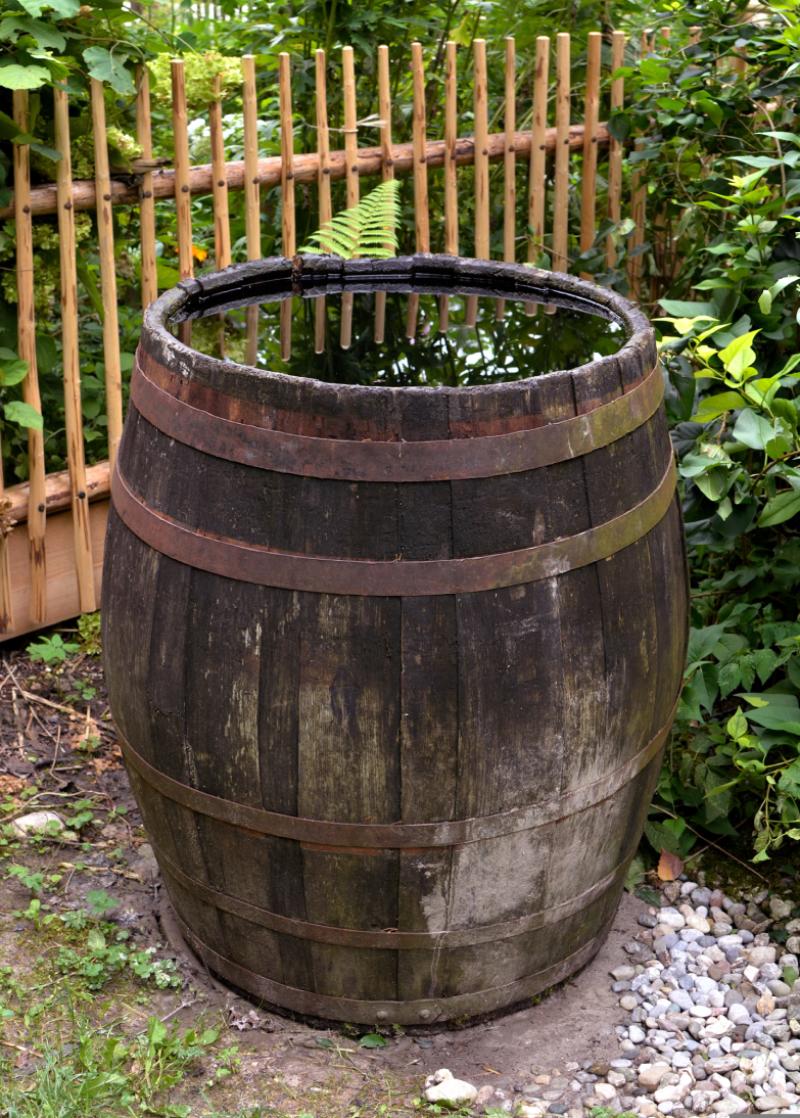
Reducing water bills and expenses
One of the primary benefits of rainwater harvesting is the significant reduction in water bills and expenses. Homeowners can offset their reliance on the municipal water supply by collecting and utilizing rainwater for various non-potable purposes, such as irrigation, toilet flushing, and laundry. This reduction in water consumption directly translates to lower water bills, leading to long-term cost savings.
Rainwater is essentially free, making it a valuable resource that can be used for outdoor activities, landscaping, and other water-dependent tasks. Rainwater harvesting systems provide a reliable alternative water source, particularly during periods of water scarcity or drought when water prices may increase.
Conserving freshwater resources
Another significant advantage of rainwater harvesting is the conservation of freshwater resources. Freshwater is a limited and precious resource, and by utilizing rainwater for non-potable applications, we can reduce our demand for treated water from traditional sources such as rivers, lakes, and underground aquifers.
Rainwater harvesting helps alleviate the pressure on freshwater sources, particularly in areas where water scarcity is a concern. By capturing rainwater and using it for tasks like watering gardens or cleaning, we can preserve the available freshwater for essential purposes such as drinking, cooking, and hygiene.
Moreover, rainwater harvesting systems promote self-sufficiency and resilience in the water supply. Instead of solely relying on external water sources, individuals and communities can harness the abundant resource of rainwater to meet their non-potable water needs.
Minimizing strain on municipal water supply
Implementing rainwater harvesting systems also reduces the strain on the municipal water supply. As the population grows and urban areas expand, the demand for water increases. This places a burden on water treatment plants and distribution infrastructure, leading to potential water shortages and increased energy consumption.
By incorporating rainwater harvesting practices, individuals and communities can play an active role in reducing the demand for municipal water. This not only eases the pressure on water treatment and distribution systems but also helps mitigate the risk of water shortages during drought or emergencies.
Rainwater harvesting systems act as decentralized water sources, providing an additional supply that reduces the reliance on centralized water infrastructure. This decentralized approach enhances water resilience and promotes a more sustainable and efficient water management system.
Sustainable Gardening with Rainwater
Rainwater harvesting provides an excellent opportunity for sustainable gardening practices. Individuals can reap numerous benefits for their plants and the environment by utilizing collected rainwater for irrigating plants and gardens. Let’s explore the advantages of sustainable gardening with rainwater:
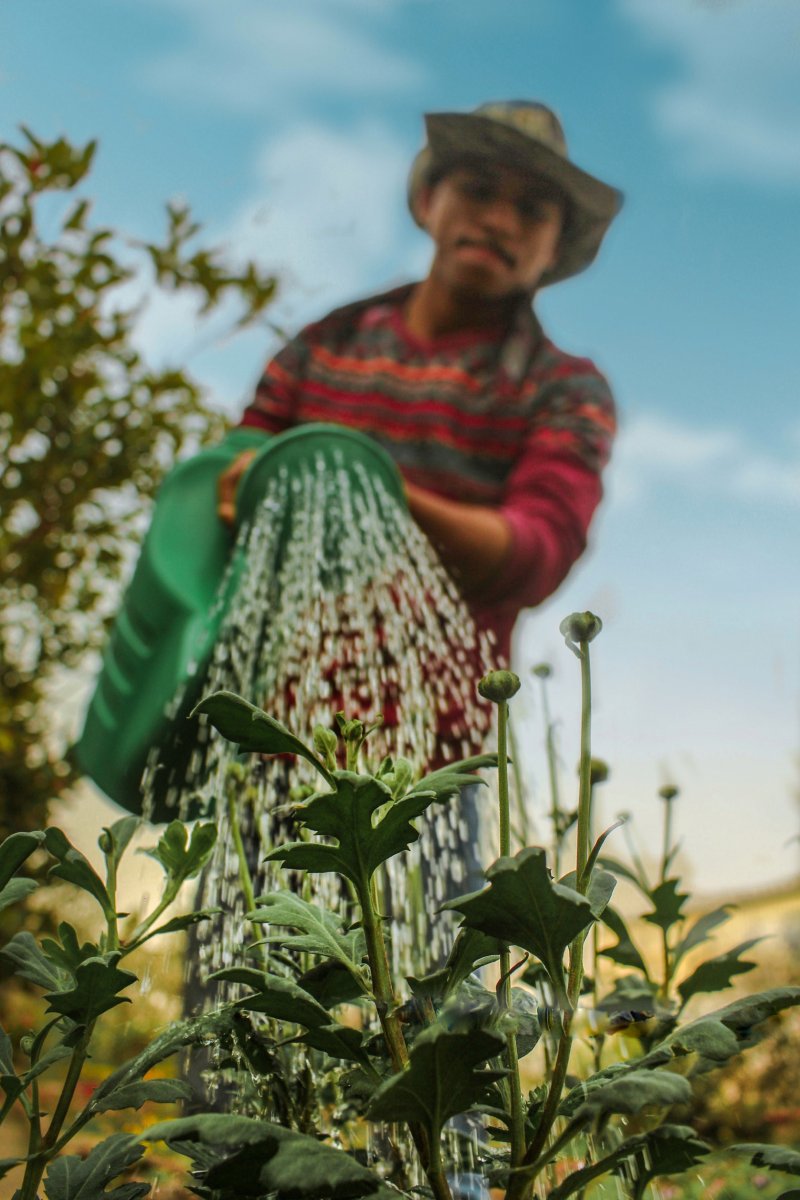
Irrigating plants and gardens with collected rainwater
One of the primary uses of harvested rainwater in gardening is irrigation. Traditional irrigation methods often rely on treated municipal water or groundwater, which can be costly and strain local water supplies. Rainwater, on the other hand, is a natural and readily available water source that can effectively nourish plants and gardens.
With a rainwater harvesting system in place, individuals can collect rainwater and store it for future use in watering plants. This collected rainwater can be distributed directly to garden beds, flower pots, and other green spaces. By utilizing rainwater for irrigation, gardeners can ensure that their plants receive a consistent and adequate water supply, even during dry periods or water restrictions.
Benefits for plant health and growth
Using rainwater for gardening offers several benefits for plant health and growth. Rainwater is naturally soft and free from the chemicals and additives commonly found in treated water. Plants often prefer rainwater due to its neutral pH and balanced mineral content, which promotes optimal growth.
Rainwater also tends to be cooler than tap water, which can be beneficial for plants, especially during hot summer months. The moderate rainwater temperature helps avoid temperature shocks that can occur when using cold tap water.
In addition, rainwater is generally free from chlorine and other disinfectants used in treating municipal water. Chlorine, in particular, can harm beneficial soil organisms, such as earthworms and beneficial bacteria. By using rainwater, gardeners can maintain a healthier soil ecosystem, supporting the overall well-being of their plants.
Reducing reliance on treated water for gardening
Another advantage of sustainable gardening with rainwater is the reduced reliance on treated water for gardening purposes. As mentioned, using treated water for irrigation can be costly, especially for large gardens or extensive landscaping projects.
Individuals can significantly reduce their dependence on treated water by incorporating rainwater harvesting into gardening practices. This not only helps to lower water bills but also contributes to water conservation efforts. By maximizing the use of rainwater for non-potable needs like gardening, we can preserve precious freshwater resources for essential uses, such as drinking and cooking.
Additionally, reducing the demand for treated water for gardening can alleviate the strain on water treatment facilities and reduce energy consumption associated with water supply and distribution. This contributes to a more sustainable and efficient water management system overall.
Promoting Environmental Responsibility
Rainwater harvesting benefits individuals by saving water, reducing expenses, and promoting environmental responsibility. We can contribute to various environmental goals and outcomes by incorporating this practice. Let’s explore how rainwater harvesting promotes environmental responsibility:
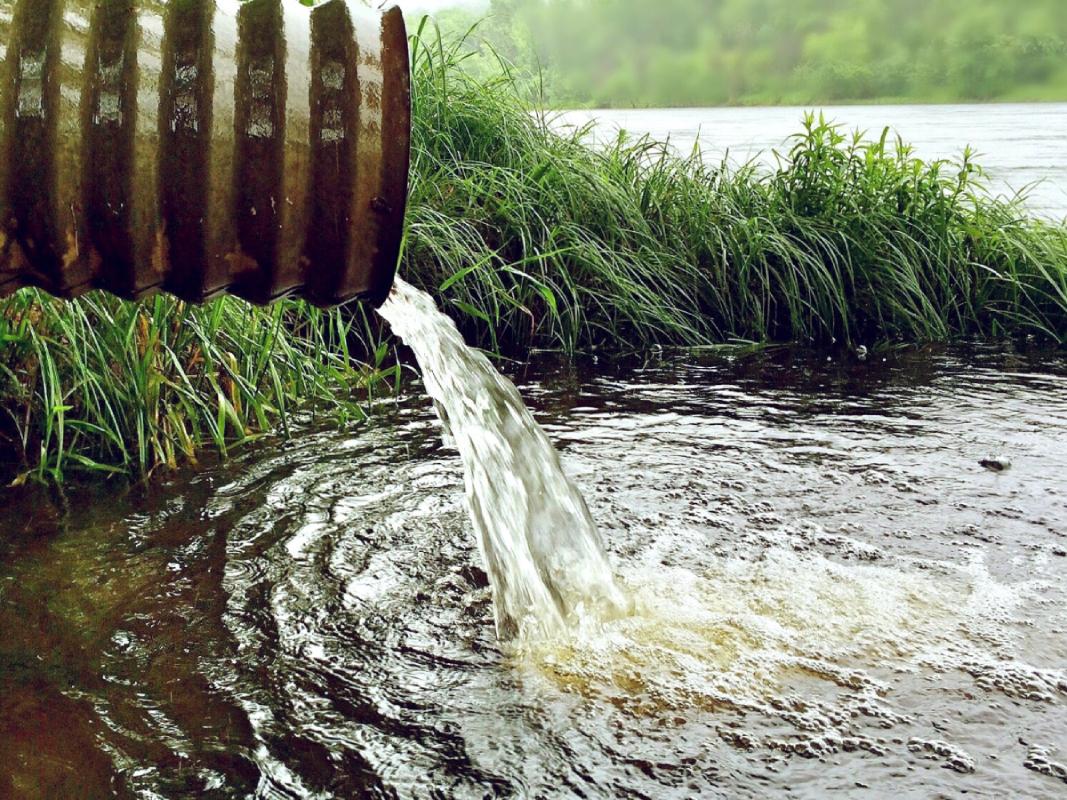
Decreasing reliance on groundwater sources
One of the significant environmental advantages of rainwater harvesting is the reduced reliance on groundwater sources. Many regions depend heavily on underground water reserves for their water supply. However, excessive groundwater pumping can lead to the depletion of aquifers and cause long-term environmental consequences.
By implementing rainwater harvesting systems, individuals can decrease their demand for groundwater. This helps to conserve these precious underground water sources, ensuring their availability for future generations. By reducing the strain on groundwater reserves, rainwater harvesting supports sustainable water management and helps maintain the ecological balance of underground aquifers.
Mitigating stormwater runoff and erosion
Rainwater harvesting plays a crucial role in mitigating stormwater runoff and erosion. In urban areas, extensive surfaces like roofs, pavements, and driveways prevent rainwater from naturally infiltrating into the ground. Instead, it quickly runs into storm drains, carrying pollutants and causing waterway erosion.
Collecting rainwater through harvesting systems can capture and utilize the rainwater that would otherwise contribute to stormwater runoff. This reduces the volume and intensity of runoff, alleviating the burden on drainage systems and reducing the risk of flooding. Moreover, by diverting rainwater to gardens and green spaces, we can promote infiltration, allowing the water to replenish groundwater sources and support healthier soil conditions.
Preserving natural waterways and habitats
Rainwater harvesting helps in preserving natural waterways and habitats. When stormwater runoff occurs, it often carries pollutants such as fertilizers, pesticides, and other contaminants from urban areas into rivers, lakes, and streams. These pollutants can degrade water quality and harm aquatic ecosystems.
By capturing and utilizing rainwater on-site, we can prevent these pollutants from reaching natural water bodies. By doing so, rainwater harvesting helps to preserve the health and integrity of aquatic habitats, protecting aquatic plants, animals, and their ecosystems. This promotes biodiversity and contributes to the overall well-being of our natural environment.
Furthermore, by reducing the demand for water from natural water sources, rainwater harvesting supports the conservation of freshwater ecosystems. It ensures that a sufficient water supply is available for the needs of plants, animals, and humans while maintaining the ecological balance of aquatic environments.
In conclusion, rainwater harvesting is an effective and environmentally responsible approach to water management. It reduces reliance on groundwater, mitigates stormwater runoff and erosion, and preserves natural waterways and habitats. By embracing rainwater harvesting, we can contribute to a more sustainable future and actively participate in protecting and conserving our precious water resources.
Rainwater Harvesting Systems and Components
Implementing an effective rainwater harvesting system involves several essential components and techniques. By understanding these elements, individuals can design and build a system that maximizes water collection, storage, and usability. Let’s explore the key components of rainwater harvesting systems:
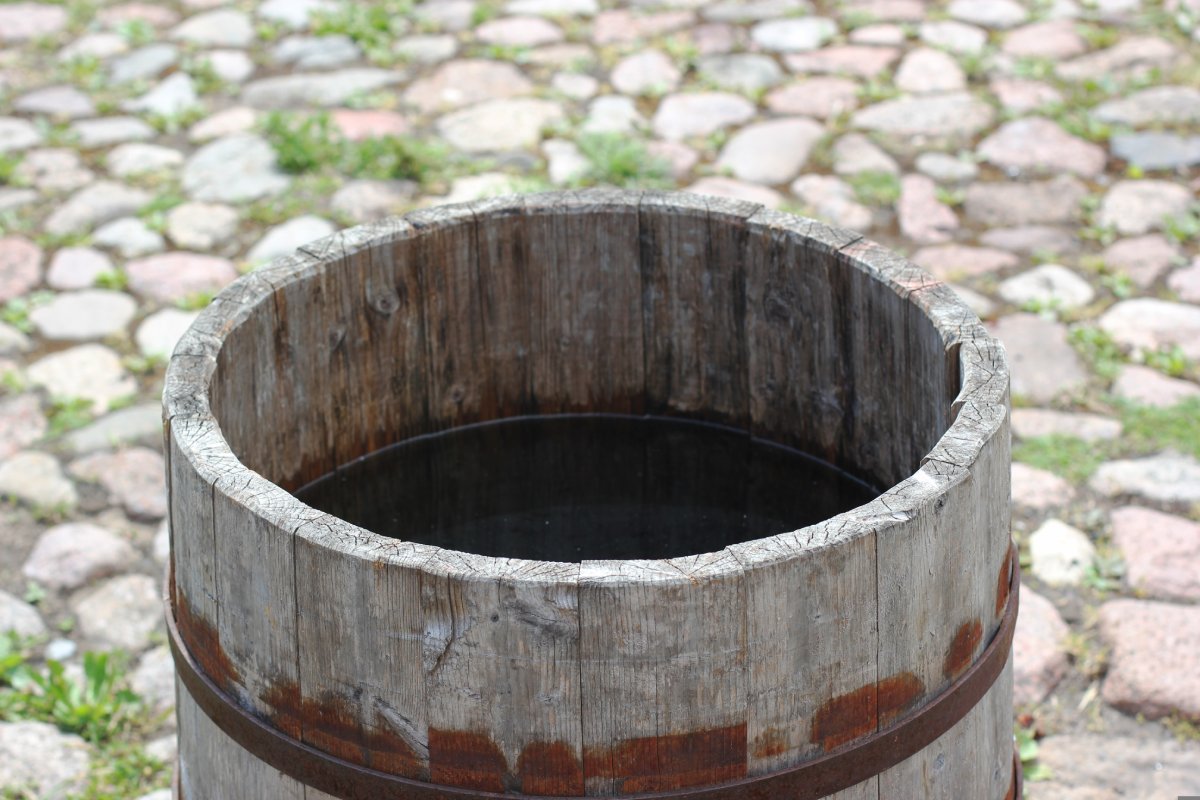
Roof collection methods and gutter systems
The roof of a building acts as the primary surface for collecting rainwater. Different roof types, such as sloped or flat roofs, require specific collection methods. Generally, rainwater is collected by channeling it from the roof surface into gutter systems.
Gutters are installed along the roof’s edges to collect rainwater and direct it towards downspouts or rain chains. Ensuring that the gutters are clean and debris-free is important to allow efficient water flow. Regular maintenance, such as removing leaves and other obstructions, will prevent clogging and ensure optimal water collection.
Storage options: tanks, barrels, and cisterns
Once rainwater is collected, it needs to be stored for later use. Various storage options are available, including tanks, barrels, and cisterns. These containers come in different sizes and materials to accommodate different needs and space constraints.
Tanks and cisterns are larger storage options typically installed underground or aboveground. They are designed to hold substantial volumes of rainwater and often include features like inlets, outlets, and overflow mechanisms. Conversely, barrels are smaller-scale storage solutions that can be placed conveniently in gardens or other suitable locations.
Consider capacity, durability, and maintenance requirements when choosing a storage option. It’s crucial to ensure the storage containers are securely sealed to prevent contamination and evaporation. Additionally, implementing appropriate filtration and purification techniques will help maintain water quality.
Filtration and purification techniques
Rainwater collected from roofs may contain debris, pollutants, or microorganisms. Therefore, it’s essential to incorporate filtration and purification techniques into the rainwater harvesting system to ensure the water is safe for its intended uses.
Filtration systems can remove larger particles, leaves, and debris from the collected rainwater. This can be achieved through mesh screens or filters installed at the entry point of the storage container or at the downspout. These filters trap solid particles, preventing them from entering the storage and distribution system.
Purification techniques such as UV sterilization or chlorination can be employed to address microbial contaminants. UV sterilization uses ultraviolet light to destroy bacteria, viruses, and other pathogens present in the water. Chlorination involves adding a small amount of chlorine to disinfect the water and eliminate harmful microorganisms.
It’s important to regularly maintain and clean the filtration and purification components to ensure their effectiveness. Regular inspection and replacement of filter media and disinfection systems, when necessary, will help maintain the quality of the harvested rainwater.
By understanding and incorporating these key components and techniques, individuals can design and implement a reliable rainwater harvesting system that optimizes water collection, storage, and quality. With proper installation and maintenance, these systems enable homeowners to harness the benefits of rainwater for various purposes, contributing to water conservation efforts and realizing the advantages of rainwater harvesting.
Planning and Design Considerations
Careful planning and consideration are crucial to effectively implement a rainwater harvesting system and maximize its benefits. By assessing water needs, sizing the system appropriately, and understanding legal and regulatory requirements, individuals can ensure the success and compliance of their rainwater harvesting initiatives.

Assessing water needs and usage patterns
Before designing a rainwater harvesting system, it’s essential to assess the property’s water needs and understand the usage patterns. This involves evaluating the different purposes for water use, such as outdoor irrigation, toilet flushing, laundry, or other non-potable applications.
By analyzing historical water bills or monitoring water usage, individuals can determine the volume of water consumed and identify areas where rainwater can effectively replace the use of treated water. This assessment helps prioritize water needs and allocate the harvested rainwater accordingly.
Sizing the rainwater harvesting system
The size of the rainwater harvesting system is an important consideration to ensure it meets the water demands of the property. It involves determining the storage capacity required and the appropriate collection area.
The storage capacity depends on factors such as the area’s average annual rainfall, the catchment surface’s size (roof area), and the intended uses of the harvested water. By estimating the amount of rainwater that can be collected during the rainy season and comparing it to the anticipated demand, individuals can determine the suitable storage capacity.
Additionally, considering the collection efficiency of the system is important. Not all rainfall can be effectively collected due to evaporation, roof material, or slope. Estimating the collection efficiency helps in accurately sizing the system and avoiding oversizing or undersizing.
Legal and regulatory considerations
Before implementing a rainwater harvesting system, one must familiarize oneself with the local laws, regulations, and permits governing rainwater harvesting. Some regions have specific guidelines or restrictions regarding collecting, storing, and using rainwater.
Understanding the legal requirements ensures compliance with local regulations and prevents potential issues. It may involve obtaining necessary permits, adhering to water use restrictions, or meeting specific standards for storage and treatment. Consulting with local authorities or water management agencies can provide valuable information and guidance regarding the legal aspects of rainwater harvesting.
Moreover, it’s important to consider any homeowner association guidelines or contractual obligations that may affect the implementation of rainwater harvesting systems. Obtaining approval or addressing any concerns from the relevant parties ensures a smooth and seamless system integration into the property.
By carefully considering these planning and design aspects, individuals can optimize the functionality and effectiveness of their rainwater harvesting systems. Proper assessment of water needs, sizing the system appropriately, and compliance with legal requirements contribute to the successful implementation of rainwater harvesting, enabling individuals to save water and money while promoting environmental sustainability.
Installation and Maintenance Tips
Implementing a rainwater harvesting system involves careful installation and regular maintenance to ensure its optimal performance and longevity. Whether you choose to install the system yourself or hire a professional, understanding the maintenance tasks and troubleshooting common issues is essential for the system’s efficient operation.

DIY vs. professional installation
When it comes to installing a rainwater harvesting system, individuals have the option to either undertake the installation themselves or hire a professional. The choice depends on personal skills, time availability, and the system’s complexity.
DIY installation can be cost-effective for individuals with the necessary knowledge and skills. There are various resources available, including installation guides, videos, and workshops, that can provide step-by-step instructions for setting up the system. However, it’s important to ensure compliance with local regulations and building codes during installation.
On the other hand, hiring a professional ensures that the system is installed correctly and efficiently. Professionals have experience designing and installing rainwater harvesting systems and can provide expert advice on system components, sizing, and integration with existing infrastructure. Additionally, they can help obtain necessary permits and ensure compliance with local regulations.
Maintenance tasks for optimal system performance
Regular maintenance is crucial to keep the rainwater harvesting system operating at its best. By performing routine tasks, individuals can prevent issues, maintain water quality, and prolong the lifespan of system components. Here are some essential maintenance tasks to consider:
-
Gutter and downspout cleaning: Regularly clean the gutters and downspouts to remove debris, leaves, and other particles that can obstruct the flow of rainwater into the collection system.
-
Tank or cistern inspection: Check the storage tank or cistern for any signs of damage, leaks, or cracks. Ensure that the lid is properly sealed to prevent contamination and evaporation.
-
Screen or filter cleaning: Clean or replace the screens or filters installed in the system to remove sediment, debris, or other contaminants. This helps maintain water quality and prevents clogging.
-
Overflow and drainage management: Ensure that the overflow outlets and drainage pipes are clear of obstructions to prevent water accumulation or flooding.
-
Pump maintenance: If a pump is used in the system, follow the manufacturer’s instructions for pump maintenance, including regular inspection, lubrication, and cleaning.
-
Water quality testing: Periodically test the quality of the harvested rainwater to ensure it meets the intended uses. Based on local guidelines, this may involve testing for pH levels, bacteria, or other contaminants.
Troubleshooting common issues
Despite regular maintenance, issues may arise with the rainwater harvesting system. It’s important to be familiar with common problems and their potential solutions. Some common issues include:
-
Clogged filters or screens: If the system is not collecting sufficient rainwater or the flow rate is reduced, it could be due to clogged filters or screens. Clean or replace them as needed.
-
Leaks or cracks: Inspect the storage tank, pipes, and connections for leaks or cracks. Repair or replace damaged components promptly.
-
Pump failure: If the system includes a pump, check for any pump-related issues, such as power supply problems, motor failure, or blocked impellers. Consult the pump manufacturer or a professional for troubleshooting and repair.
-
Water contamination: If there are concerns about water quality, such as odor, discoloration, or unusual taste, it may indicate contamination. Identify and address the source of contamination, and consider installing additional filtration or purification systems if necessary.
By staying proactive with maintenance tasks and promptly addressing any issues, individuals can ensure their rainwater harvesting systems’ optimal performance and longevity. Regular maintenance preserves the system’s functionality and contributes to the overall benefits of water conservation and cost savings.
Conclusion
Rainwater harvesting is an effective and sustainable solution that offers numerous benefits for individuals, communities, and the environment. By recapitulating the advantages of rainwater harvesting, encouraging its adoption, and emphasizing the importance of water conservation and responsible water management, we can pave the way for a more sustainable future.
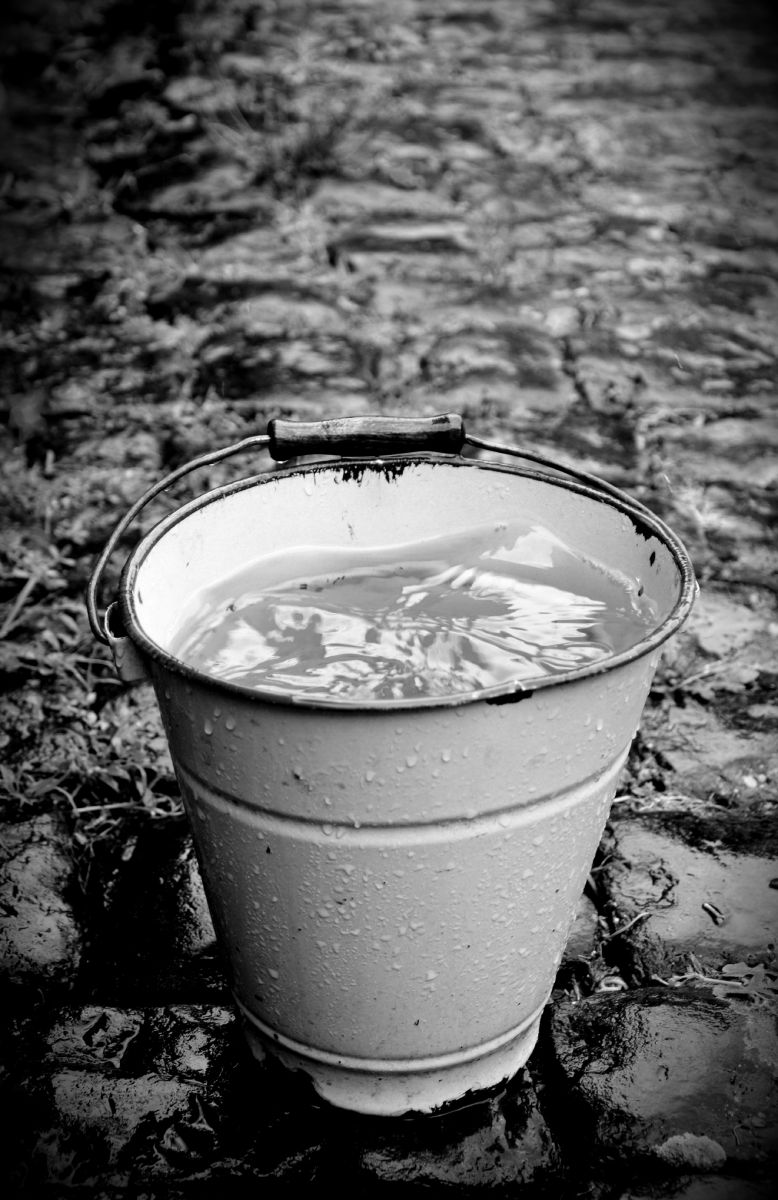
Recap of the benefits of rainwater harvesting
Throughout this article, we have explored the many benefits that rainwater harvesting provides. Firstly, it enables individuals to save water and reduce their water bills significantly. By collecting and utilizing rainwater for various non-potable uses, such as irrigation, cleaning, and toilet flushing, households can reduce their reliance on treated water sourced from the municipal supply. This translates into tangible financial savings and a more cost-effective water management system.
Rainwater harvesting also contributes to the conservation of freshwater resources. As we face increasing challenges related to water scarcity and depletion of groundwater reserves, utilizing rainwater can help alleviate the strain on these valuable sources. By harvesting rainwater, we tap into an abundant and renewable water supply that would otherwise go unused and runoff into storm drains.
Encouragement to adopt rainwater harvesting practices
Considering the numerous advantages, it is highly encouraged for individuals, households, and communities to embrace rainwater harvesting practices. Rainwater harvesting can be adapted to various scales and needs in an urban or rural setting.
Start by assessing your water requirements and usage patterns. Understanding how much water you need and for what purposes will help determine the size and design of your rainwater harvesting system. Consider roof area, annual rainfall, and local regulations to optimize the system’s efficiency.
Seek guidance from professionals or local authorities experienced in rainwater harvesting. They can provide expert advice on system design, installation, and maintenance, ensuring that your system meets all necessary requirements and operates effectively.
Promoting a sustainable future through water conservation and responsible water management
Rainwater harvesting is not just about saving water and reducing costs but also about promoting a sustainable future. By adopting rainwater harvesting practices, we actively participate in responsible water management and contribute to environmental preservation.
Rainwater harvesting reduces the reliance on groundwater sources, preserving these valuable reserves for essential purposes and preventing their depletion. Additionally, it helps mitigate stormwater runoff and erosion by capturing and utilizing rainwater onsite. By doing so, we can minimize the strain on drainage systems, control erosion, and prevent the contamination of natural waterways with pollutants carried by runoff.
We contribute to a more sustainable and resilient water management system by embracing rainwater harvesting practices. It empowers individuals and communities to take control of their water supply, reduce their ecological footprint, and promote environmental responsibility.
In conclusion, rainwater harvesting offers numerous benefits, ranging from water and cost savings to environmental conservation. It is an effective and accessible solution that can be implemented by individuals, households, and communities. Let us embrace rainwater harvesting practices and work together towards a sustainable future of responsible water management and conservation.

